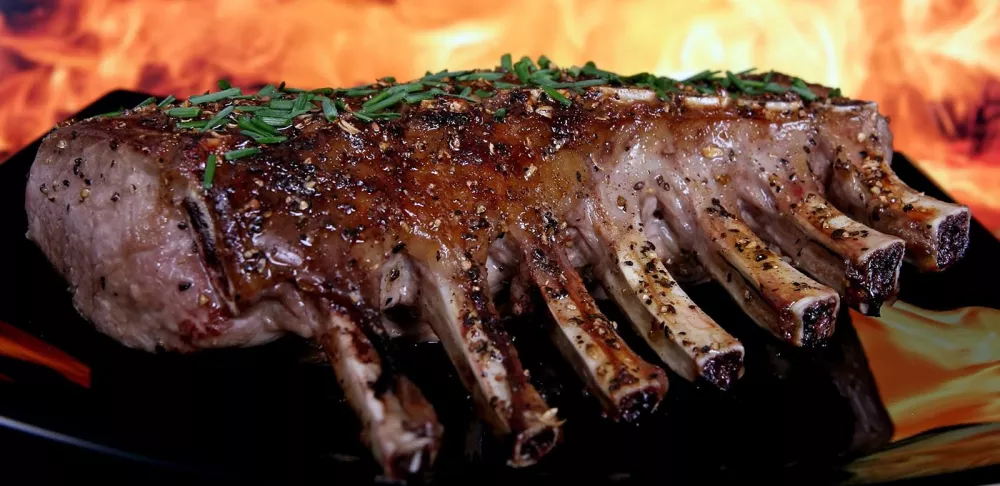As one who grew up in a northern American state, most of my life I thought of the word "barbecue" as a noun, one that necessarily meant a backyard gathering that likely involved a grill — i.e. “having a barbecue.”
The verb form, to barbecue or barbecuing, was invoked less frequently, but most certainly meant the process of cooking something on a grill. After working in a restaurant dedicated to the barbecue styles of the American South, however, I was quickly schooled that both the noun and verb forms had different meanings.
Barbecue meant meat that was smoked — full stop. One eats barbecue. This could mean pulled pork sandwiches, or beef brisket, or whole smoked hog or sausages, etc. From what I could tell, “barbecuing” was rare to nonexistent in the lexicon, and just a dumb thing that Northerners said that had no relation to real barbecue.
Related Recipe: Carolina-Style Pork Barbecue
While the U.S. is divided in its uses of the term, it begs the question, how does the rest of the world approach barbecue? A little exploration into the etymology shows that the word itself owes its roots to that great American barbecue state: Florida. Perhaps not contemporary Florida, but rather the early, native Timucua population of the area as well as Arawak people of the Caribbean. The native term barabicu is translated to mean "a framework of sticks set upon posts."
Now what does that structure sound like to you? A grill! (A point for Northern American word usage.)
Via European exploration of the Caribbean, the Spanish term barbacoa was born, and from that, we get barbecue. Plenty of other cultures have variations on open-flame cooking, but two things remain constant: meat and heat. (Outdoors and macaroni salad optional, though volume and community are often recurring themes.)
Though by no means an exhaustive list, here we zoom in on several unique barbecue styles throughout the world.
Korean Barbecue (Gogi-gul)
Japan has its great, grilled street meat yakitori and China has its savory, marinated strips of char siu, but Korean barbecue is arguably the most famous from the Far East. Korean barbecue, or gogi-gul, is a process of grilling meat over a charcoal or gas grill in a way that almost nobody else does it: built right into the table top, rendering the weather completely inconsequential to the occasion, and giving rise to the popularity of Korean barbecue restaurants worldwide. Bulgogi, a marinated beef tenderloin, is the most common meat option, and similar to the U.S., side dishes and condiments are huge supporting characters in Korean barbecue.
Indian Tandoori
Another one of the most common ways meat and heat come together to create magic is in the form of a clay or metal pot containing a charcoal or wood fire where the meat gets set as close to the flame as possible, as is the case in Indian tandoori. A cuisine popularized by Muslim populations, the most common protein for the tandoor is chicken, which is often marinated in spices and yogurt, tenderizing the meat and helping it retain moisture during the extremely high-heat cooking process.
Related Recipe:Indian Chicken Wings
Turkish Kebab
The Mediterranean diet is often cited as one of the healthiest on earth, so it’s no wonder that Mediterranean barbecue culture routinely incorporates vegetables. Turkish shish kebabs, or şiş kepap in the native language, are skewered chunks of meat, commonly lamb, as well as vegetables, simply cooked on an open grill or mangal.
Jamaican Jerk
A dry rub or marinade of various spices applied before grilling or smoking is common among many styles of worldwide barbecue, including many traditions in the American South, but perhaps nobody does it quite like they do in Jamaica. Scotch bonnet peppers and allspice create a profile that is at once sharp and rich, with layers of smoky flavor that are aided and abetted by smoke during the slow cooking process. Fun fact: the term jerk shares etymology with that which we call jerky.
South African Braai
Braai is an Afrikaans word that simply means “grilled meat,” but as in the word “barbecue,” the nuance is much richer than that. Grilled meats are indeed the star of the show, especially a flavorful South African sausage known as boerewors, but potluck-style side dishes and salads are also mandatory components. Much like American barbecue, South African braai describes as much the social custom as it does the cooking process or the cooking equipment, and is so important to the culture as to warrant its own holiday: Braai Day on September 24. (Kind of like Memorial Day, which unofficially kicks off barbecue season in the U.S.)
Mexican Barbacoa
Beyond grills, smokers and tandoor, another way to approach outdoor cooking is to dig yourself a hole. Barbacoa, a process common in Mexico as well as other Central and South American countries, involves wrapping large cuts of meat from sheep, beef or goat in maguey leaves, then setting them directly in the underground fire pit. While most barbecue methods promote dry-heat cooking, the addition of leaves in barbacoa introduces the idea of steam into the barbecue equation. The succulent meat is then pulled apart and often served as tacos, on a tortilla adorned with onions, cilantro and lime.
Brazilian Churrasco
The community element of American barbecue traditions has sympathizers in other cultures, especially South African and Australian approaches to the activity, but in Brazil we have a kindred spirit where another important piece of American BBQ culture is concerned: volume. If you’ve ever wholeheartedly taken on a laughably cheap pile of succulent smoked meats at a barbecue joint in the South, then you will appreciate the all-you-can-eat nature of Brazilian churrasco, which features grilled, skewered meats and served tableside until you beg for mercy.
Filipino Lechon
Throughout the Pacific Islands you will find variations of lechon, the Spanish name adopted in the Philippines, for the process of spit-roasting a whole pig over an open flame. Community plays a part here as well, especially since the process is long and labor-intensive; it begs for a party or special occasion. Hawaiian luau and Tahitian hima’a are similar activities that incorporate a whole-cooked pig into a celebration or ceremony.
Australian Barbie
Some clarification, to begin, if you immediately conjured the phrase “throw some shrimp on the barbie." One, in Australia it’s likely a prawn, not a shrimp. Two: please don’t throw anything where open-flame cooking is concerned. Three: Australian barbie is a lifestyle, not just a punchline. Try to show some respect, but by all means do carefully place another prawn upon the barbie when attending an Australian barbecue.
Elevated Barbecue: Sous Vide Grilled Short Ribs Recipe






